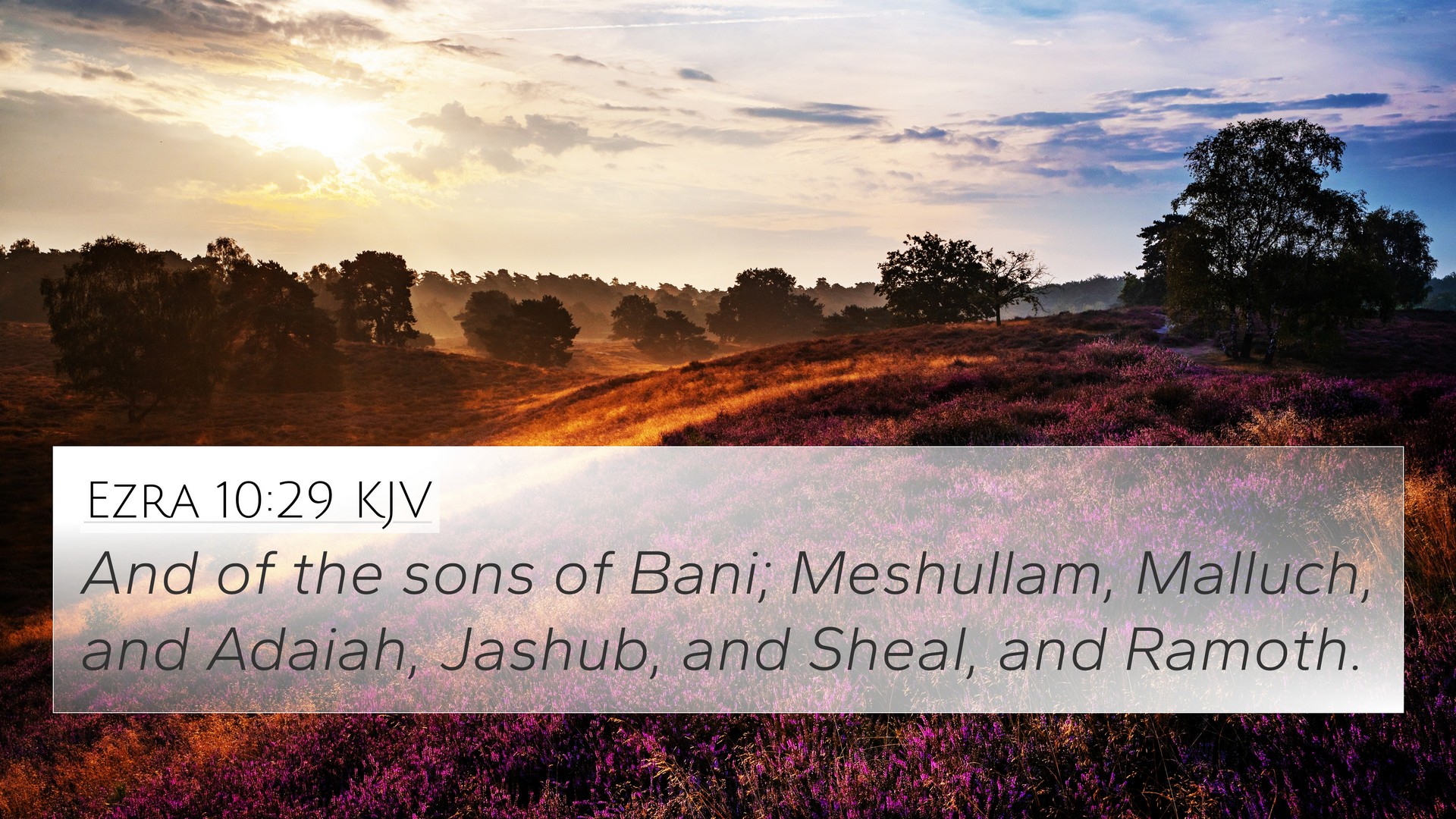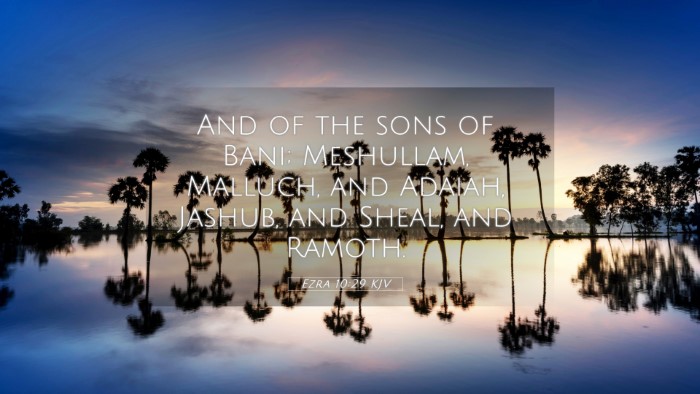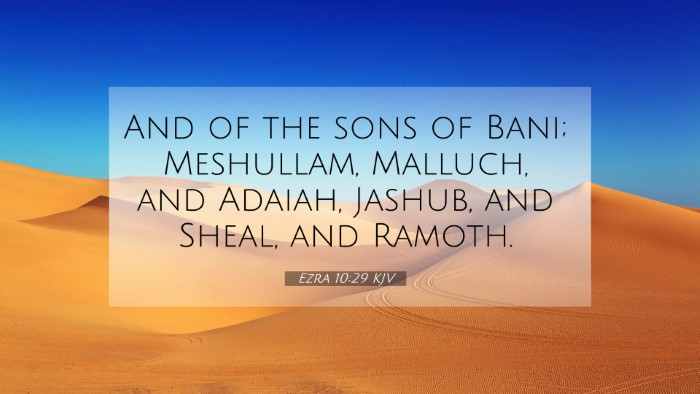Understanding Ezra 10:29
Ezra 10:29 states: "And the children of the priests with their wives, the Levites, the Nethinims, and all Israel, dwelt in their cities." This verse captures a significant moment in Israel's history after their return from Babylonian exile and the efforts to restore the community in alignment with their covenant obligations.
Key Themes in Ezra 10:29
- Restoration and Community: The verse emphasizes the re-establishment of the community in their cities, indicating a return to normalcy and covenant faithfulness.
- Family Units: The mention of the children of priests and their wives highlights the importance of family in maintaining spiritual and social order.
- Diversity within Unity: This verse brings together different groups within Israel—priests, Levites, and others—signifying a unified community despite their diverse roles.
Commentary Insights
This section synthesizes insights from various public domain commentaries:
-
Matthew Henry: Henry comments on the restoration efforts in Ezra, noting that this verse represents the collective return of those committed to following God’s commands. It signifies the importance of holiness and separation from foreign influences which had previously led them astray.
-
Albert Barnes: Barnes offers that this verse indicates the organization of the community into their respective places, fulfilling God's promises regarding their inheritance in the land. It reflects the commitment to adhere to the law and the prophets, establishing a structure for communal worship and service to God.
-
Adam Clarke: Clarke explores the implications of the verse regarding the roles of priests and Levites. He emphasizes the continuity of priestly service and the vital role of the Levites in supporting worship activities, which is fundamental for the spiritual life of Israel.
Bible Cross-References
This verse connects with numerous other scriptures, enhancing our understanding through thematic Bible verse connections:
- Nehemiah 12:1-9 - Details the priestly lineage and responsibilities after the return from exile, echoing the themes of restoration and service.
- Ezra 1:5 - Highlights the awakening of the people's spirit to return to Jerusalem, setting the stage for their communal restoration.
- Malachi 2:5-7 - Discusses the role of the priest in maintaining covenantal relationship with God and instructing the people in righteousness.
- Acts 15:25-26 - Reflects the unity of different groups in a church setting, akin to the diverse classes within Israel coming back together.
- Romans 12:4-5 - Emphasizes the many members of one body in Christ, similar to the various groups that comprise the restored Israel.
- Ephesians 2:19-22 - Talks about being fellow citizens and a holy temple, paralleling the rebuilding of the community of Israel in Ezra.
- Hebrews 10:24-25 - Encourages not neglecting to meet together, emphasizing the necessity of community in spiritual life as seen in Ezra's context.
Tools for Bible Cross-Referencing
The process of cross-referencing enriches Bible study and provides a more profound understanding of scripture. Here are some tools and methods:
- Bible Concordance: Use a concordance to locate verses according to keywords and themes.
- Bible Cross-Reference Guide: Seek out guides that can provide systematic connections between verses across different books.
- Digital Bible Study Tools: Many online platforms offer easy access to cross-referenced verses that can be explored interactively.
- Commentaries: Use theological literature as a way to gain insights into biblical connections and messages.
- Cross-Reference Systems: Familiarize yourself with specific versions of the Bible that include cross-references in the margins for efficient study.
Conclusion
Ezra 10:29 serves as a profound reminder of the importance of community, restoration, and adherence to God’s laws. Through its inter-Biblical dialogue with other scriptures, it not only informs us about the history of Israel's return but also invites us to reflect on our own commitments to our communities of faith today.





